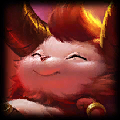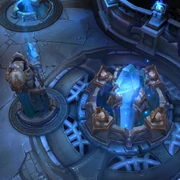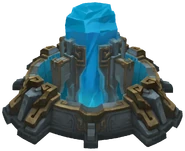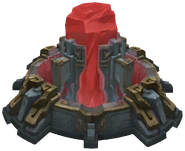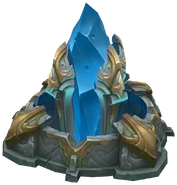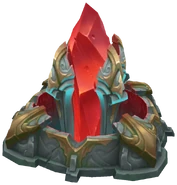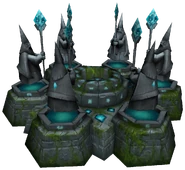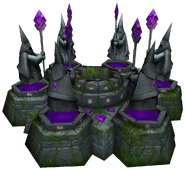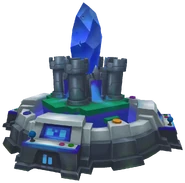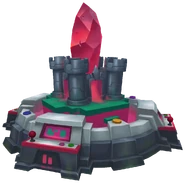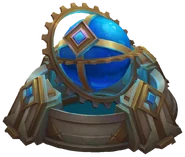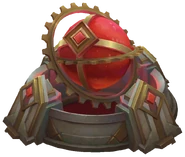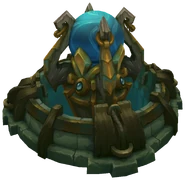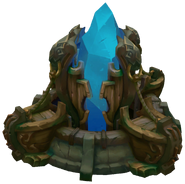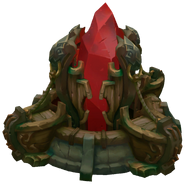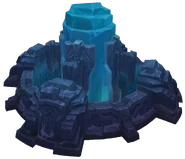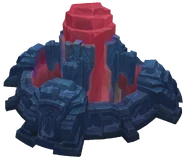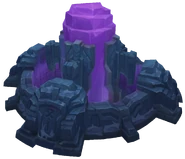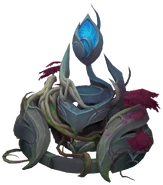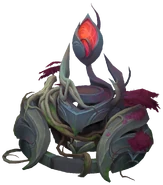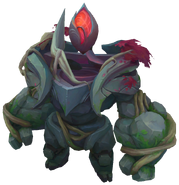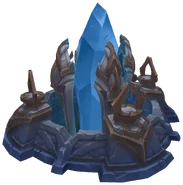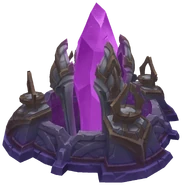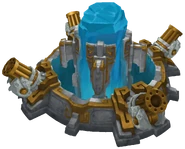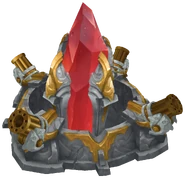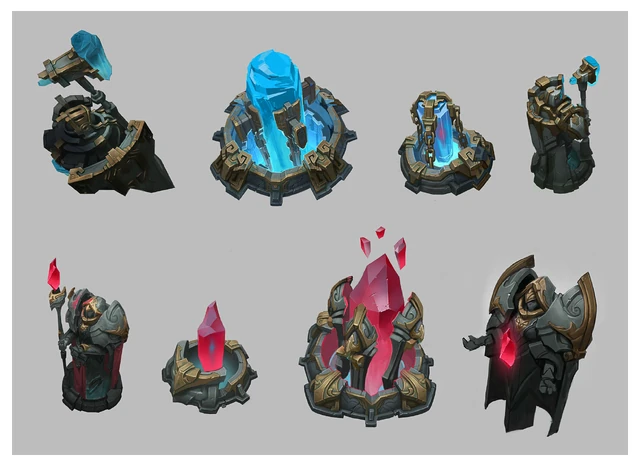- This page is about the
 League of Legends entity. For other uses of Nexus, see Nexus (disambiguation).
League of Legends entity. For other uses of Nexus, see Nexus (disambiguation).
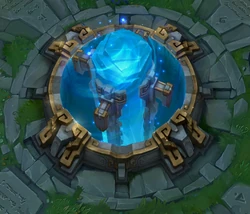
Blue Nexus
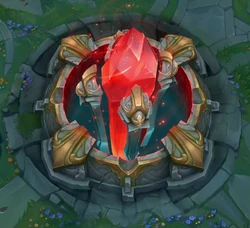
Red Nexus
The Nexus is a structure that serves as the primary objective in all game modes in League of Legends. The team that destroys the opposing team's Nexus wins the match. The Nexus has 5500 health and 20 health regeneration per second, and 0 for all other stats.
Summoner's Rift[]
In Summoner's Rift, each team has a Nexus that is guarded by two turrets in front of it, and is responsible for spawning minions in each lane. They are located directly outside of each team's spawn. A Nexus is invulnerable so long as all three allied inhibitors or at least one of its guarding turrets are standing.
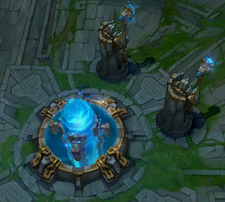
Blue Nexus and its guarding turrets
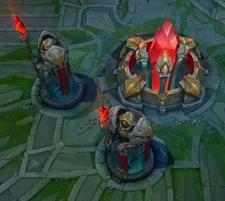
Red Nexus and its guarding turrets
Howling Abyss[]
In Howling Abyss, the only difference from Summoner's Rift is that the Nexus only spawns minions in a single lane (after 45 seconds of game time) and the base it resides in only consists of one inhibitor, which, if destroyed, renders it vulnerable to being attacked if neither of its guarding turrets are standing.
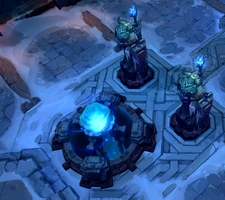
Blue Nexus and its guarding turrets
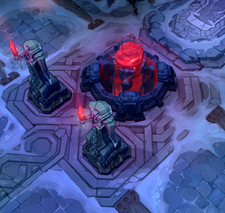
Red Nexus and its guarding turrets
Removed[]
 |
|---|
Dominion[]
- Main article: Dominion
Unlike those on other maps, the Nexuses on the Crystal Scar were untargetable and thus immune to direct damage from champions. There were instead three different ways through which players damaged the enemy nexus.
- Securing a takedown on an enemy champion. Every death a team incurred caused their Nexus to receive 2 damage.
- Taking a capture point. This would immediately deal 2 damage to the opposing Nexus.
- Holding more capture points than the opposing team; the amount of health drained per second was based on the difference in the number of capture points one team held over the other. For instance, if one team held three capture points and the other one point, the team with one point would take 2 damage per second (3 minus 1 equals 2).
Twisted Treeline[]
The Nexus on the Twisted Treeline shared similar characteristics to the one on the Summoner's Rift, though it did have some differences. Due to the nature of the map, which only had two lanes, this Nexus only spawned two minion waves per cycle, and began spawning them 45 seconds earlier, at 0:45 game time. The Nexus on the Treeline was also only defended by a single turret and two inhibitors.
The Nexus on the Twisted Treeline has 5000 health, and regenerates 15 health per second. As with other Nexuses, it has no armor, magic resistance, items, or attacks.
Notes[]
- When a Nexus had 100 health or less, champion takedowns and point captures no longer dealt damage to that Nexus, with the crystal only receiving periodic damage from a capture point advantage.
- Whenever a Nexus reached 75% (375), 50% (250), or 25% (125) health, the announcer would play a voiceover to alert both teams.
- Whenever a Nexus lost health from a takedown or point capture, players on that team were notified via a small text prompt atop their champion. (-2 Your Nexus Health)
- Whilst a Nexus was taking damage from a capture point advantage, a team-coloured beam (red/green) would begin drilling into the crystal from directly above.
Nexus Variants[]
League of Legends have had numerous different nexai during its history. Most were primarily used for Summoner's Rift while the remaining ones for ARAM, Twisted Treeline, and other game modes.
These are all the Inhibitors used after second Summoner's Rift map update
Other game modes refers to Arcade, Butcher's Bridge, Howling Abyss, Twisted Treeline, and Ultra Rapid Fire inhibitors.
Both original Howling Abyss, Twisted Treeline and Murder Bridge had altered variants of the original Summoner's Rift inhibitors before their eventual updates.
Trivia[]
- Scoring the last hit on a Nexus grants
 50.
50. - According to the client, the plural of Nexus is Nexai.
- has no effect on Nexai, even if they are vulnerable.
- The Nexus section of the League of Legends website is likely named after the in-game Nexus crystal.
- In the Dominion mode, a unique track began to play whenever both team's Nexai were at or below 70 health. This track was a more intense variant of the standard late-game track.
- Unlike the other gamemodes, the Nexus did not spawn minions in Dominion. Minions instead spawned from small shrines behind capture points.
- The animations of the walking Nexus minion are reused from those of .
- Destroying the Nexus grants all champions untargetability and Invulnerability.
- If a champion is already untargetable and/or invulnerable, then they will lose either or both from the untargetability and invulnerability gained from the Nexus' destruction. This means it is possible for a champion to die after a Nexus has exploded.
- Nexai used to bypass turret's protections and allows it to be destroyed directly in older versions. The only way this is possible in current patch is by the surrender of a team.
- Nexai can exploding twice and both Nexai also can be destroyed (visually). This is based on how two teams in the match use their surrender feature.
- Unlike base turrets, Nexai and Inhibitors' regeneration ability is their own passive ability and do not rely on items.
- Chaos Nexus has a different "arming" animation when compared to the Order's; the crystal itself spin clockwise while the four stone platings surrounding it spin counter-clockwise before slowing down and finally matching the pace of their orbiting crystal structure.
